IMSML Website Article 20/2023: Resolution MSC.263(84)/Rev.1 – Performance Standards and Functional Requirements for The Long-Range Identification and Tracking of Ships, Part 3 of 10 - Paragraph 5, Application Service Providers
This is the Third Part (of a 10 part article series) on Resolution MSC.263(84)/Rev.1 The focus of this article is Paragraph 5, concern ‘Application Service Providers’.
Who Benefits From the Services of ‘Application Service Providers’ (ASP)?
Pursuant to Paragraph 5.1, ASPs provide services to:
[1] a National LRIT Data Centre, should be recognized by the Contracting Government establishing the centre, see Paragraph 5.1.1;
[2] a Regional or a Cooperative LRIT Data Centre, should be recognized by the Contracting Governments establishing the centre. In such a case, the arrangements for recognizing the ASPs should be agreed amongst the Contracting Governments establishing the centre, see Paragraph 5.1.2; and …
[3] an International LRIT Data Centre, should be recognized by the Committee, see Paragraph 5.1.3.
How does an ASP Function?
IMO is provided with a list of names and contact details of recognised ASPs (together with any associated conditions of recognition) from Contracting Governments. This should be updated without undue delay as soon as changes occur, see Paragraph 5.2.
Under Paragraph 5.3, there are 3 main functions provided by an ASP:
[1] Ensure minimum functionality by providing a communication protocol interface (ie between the Communication Service Providers and the LRIT Data Centre). This involves the following:
(a) remote integration of the shipborne equipment into an LRIT Data Centre, see Paragraph 5.3.1.1;
(b) automatic configuration of transmission of LRIT information, see Paragraph, see Paragraph 5.3.1.2;
(c) automatic modification of the interval of transmission of LRIT information, see Paragraph 5.3.1.3;
(d) automatic suspension of transmission of LRIT information, see Paragraph 5.3.1.4;
(e) on-demand transmission of LRIT information, see Paragraph 5.3.1.5; and
(f) automatic recovery and management of transmission of LRIT information, see Paragraph 5.3.1.6;
[2] Monitoring of LRIT information throughput and routing through an integrated management system, see Paragraph 5.3.2
[3] Collection, storage and routed LRIT Information in a reliable and secure manner, see Paragraph 5.3.3.
Table 2 - Data to be Added by an ASP and at the LRIT Data Centre
There are eight parameters for Table 2, each accompanied by the relevant ‘comment’. According to Paragraph 5.4, these parameters include:
[1] Ship identity. This include the MMSI for the ship, and IMO’s ship identification number. For the latter, see Regulation XI-1/3 and Resolution A.1078(28) on the IMO Ship Identification Number Scheme.
[2] Name of ship, ie Name of the ship which has transmitted the LRIT information in the English language using Latin-1 alphabet and UTF-8 encoding.
[3] Type of ship, ie Type of the ship which has transmitted the LRIT information using a predefined code.
Note: Types of ships to be used in LRIT Messages are outlined in LRIT Technical Documentation, Part 1, see MSC.1/Circ.1259, as revised.
[4] Time Stamp 2, ie The date and time the transmission of LRIT information is received by the ASP (if used).
[5] Time Stamp 3, ie The date and time the received LRIT information is forwarded from the ASP (if used) to the appropriate LRIT Data Centre.
Note: For [4] and [5] above, all times should be indicated as Universal Coordinated Time (UTC).
[6] LRIT Data Centre Identifier, to be clearly indicated by a Unique Identifier.
[7] Time Stamp 4, ie the date and time of LRIT Information is received by the LRIT Data Centre.
[8] Time Stamp 5, ie the date and time the transmission of the LRIT Information is forwarded from the LRIT Data Centre to an LRIT Data User.
Note: For [7] and [8] above, all times should be indicated as Universal Coordinated Time (UTC).
Freedom to enact specific requirements for recognition of ASPs under national law is preserved for Administrations and Contracting States, by imposition of conditions for recognition, see Paragraph 5.5.
Thank you for reading IMSML Website Article 20/2023
Stay tuned for the next IMSML Website Article 21/2023: Resolution MSC.263(84)/Rev.1 – Performance Standards and Functional Requirements for The Long-Range Identification and Tracking of Ships, Part 4 of 10 - Paragraphs 6 & 7, Communication Service Providers and LRIT Data Centre
Signing-off for today,
Dr Irwin Ooi Ui Joo, LL.B(Hons.)(Glamorgan); LL.M (Cardiff); Ph.D (Cardiff); CMILT
Professor of Maritime and Transport Law
Head of the Centre for Advocacy and Dispute Resolution
Faculty of Law
Universiti Teknologi MARA Shah Alam
Selangor, Malaysia
Wednesday, 22 September 2023
Note that I am the corresponding author for the IMSML Website Articles. My official email address is: uijoo310@uitm.edu.my
